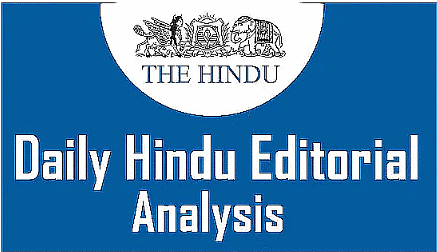UPSC Exam > UPSC Notes > Current Affairs & Hindu Analysis: Daily, Weekly & Monthly > The Hindu Editorial Analysis- 21st March 2024
The Hindu Editorial Analysis- 21st March 2024 | Current Affairs & Hindu Analysis: Daily, Weekly & Monthly - UPSC PDF Download

Ferocious friends
Why in News?
The Department of Animal Husbandry and Dairying recently issued a letter to states where it requested local bodies to not issue any licenses or permits for the sale and breeding of dogs it considers to be ‘ferocious’ and ‘dangerous for human life’.
Societal implications of breeding ferocious dogs
- Public Safety: Ferocious dogs present a significant risk to public safety, particularly in densely populated urban areas where interactions with humans are common. Their aggressive tendencies towards strangers can result in biting incidents or attacks, causing injuries or even fatalities.
- Human-Animal conflict: Breeding ferocious dogs exacerbates the conflict between humans and animals. It perpetuates a cycle of fear and mistrust between the two, leading to negative interactions and potential harm to both humans and animals.
- Animal Welfare: Breeding ferocious dogs for aggression often entails unethical treatment, including neglect, abuse, and mistreatment. These dogs endure harsh training and substandard living conditions, causing both physical and psychological harm.
- Spread of Rabies: Unvaccinated, aggressive dogs contribute to the spread of rabies, a deadly disease in India.
Measures to mitigate these impacts
- Promote Responsible Dog Ownership: Educational campaigns can encourage responsible pet ownership, including proper training, socialization, and licensing of dogs.
- Sterilization and Vaccination Programs: Mass sterilization and vaccination drives can help control the population of stray dogs and prevent the spread of rabies.
- Promoting Indigenous Breeds: Encouraging the adoption of well-adapted Indian breeds Tibetan Spaniel, Lhasa Apso, and Tibetan terrier can create a safer and more culturally relevant human-animal dynamic in cities.
- Animal Shelters and Rehabilitation: Well-funded animal shelters can provide care for strays and abandoned dogs, while rehabilitation programs can help potentially dangerous dogs become suitable companions in controlled environments.
- Community Dog Patrols: Training programs can create community dog patrols with well-socialized canines, fostering a sense of security and promoting the positive aspects of human-animal relationships.
“Atlas on Animal Migration” initiative:
- This initiative is proposed by the European Union (EU).
- It aims to document and understand the migration patterns of migratory mammals in Central Asia and birds in the Eurasian-African region, including the impact of human activities like hunting.
- The atlas is seen as a crucial tool for conservation efforts, assisting in identifying key sites for migratory species and informing policy and management decisions to align with global biodiversity goals, such as the Kunming-Montreal Global Biodiversity Framework.
- The draft decisions encourage parties to utilize the atlas in their conservation strategies and direct the Secretariat to enhance and expand the atlas’s modules for better accessibility and usability.
- Additionally, the COP14 addressed the issue of seabird bycatch in fisheries, particularly in the southwest Atlantic Ocean, urging measures to prevent harm to these species and highlighting the significant threat posed by overexploitation, with millions of birds, including albatrosses and petrels, killed annually in fishing operations.
Conclusion
Implementing these measures can pave the way for a future where urban communities in India enjoy a safe and mutually beneficial relationship with dogs. Prioritizing responsible pet ownership, enforcing breed regulations, and fostering a culture of reverence for all animals are vital steps toward achieving a harmonious coexistence.
The document The Hindu Editorial Analysis- 21st March 2024 | Current Affairs & Hindu Analysis: Daily, Weekly & Monthly - UPSC is a part of the UPSC Course Current Affairs & Hindu Analysis: Daily, Weekly & Monthly.
All you need of UPSC at this link: UPSC
|
63 videos|5408 docs|1146 tests
|
Related Searches















